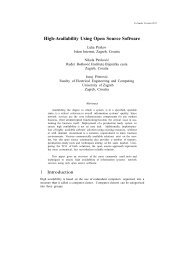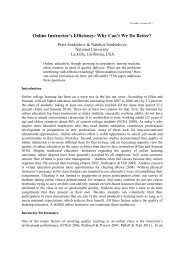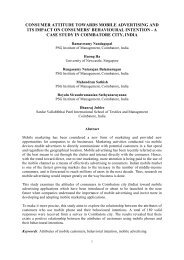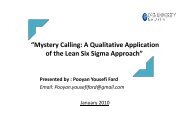Factors Influencing Malaysian Students' Intention to Study at ... - CASA
Factors Influencing Malaysian Students' Intention to Study at ... - CASA
Factors Influencing Malaysian Students' Intention to Study at ... - CASA
Create successful ePaper yourself
Turn your PDF publications into a flip-book with our unique Google optimized e-Paper software.
3. Combined models<br />
(1) Economic models<br />
E-Leader Kuala Lumpur, 2009<br />
Economic models emphasize college choice between enrollment in a High Educ<strong>at</strong>ional Institution (HEI)<br />
and the pursuit of a non collegi<strong>at</strong>e altern<strong>at</strong>ive. Economists are interested in the rel<strong>at</strong>ionships between the<br />
<strong>at</strong>tributes of “goods” (e.g. college and job characteristics) and individual choices (Jackson, 1982). Generic<br />
research indic<strong>at</strong>es th<strong>at</strong> individuals will select a particular HEI, if the benefits of <strong>at</strong>tending outweigh the<br />
perceived benefits of <strong>at</strong>tending other HEI or a non-college altern<strong>at</strong>ive (Hossler, Brax<strong>to</strong>n, & Coopersmith,<br />
1985). Therefore, the economic model emphasizes the r<strong>at</strong>ional decision-making process of students and<br />
their families and the variety of ways in which different student’s r<strong>at</strong>e and use the college <strong>at</strong>tributes <strong>to</strong><br />
make their final college choice (Hossler, Schmit, & Vesper, 1999).<br />
(2) Sociological models<br />
Sociological models were developed from educ<strong>at</strong>ional and st<strong>at</strong>us <strong>at</strong>tainment research, focusing on the<br />
aspir<strong>at</strong>ions of individuals desiring <strong>to</strong> pursue an HEI. The sociological model specifies a variety of social<br />
and individual fac<strong>to</strong>rs leading <strong>to</strong> a student’s occup<strong>at</strong>ional and educ<strong>at</strong>ional aspir<strong>at</strong>ions (Jackson, 1982). In<br />
the deriv<strong>at</strong>ive model developed by Blau and Duncan (1967), family, socioeconomic background and<br />
student academic ability are predicted <strong>to</strong> have a joint positive effect on aspir<strong>at</strong>ions for college.<br />
Sociological models of college choice (Hossler, Brax<strong>to</strong>n, & Coopersmith, 1985) have focused on the<br />
identific<strong>at</strong>ion and interrel<strong>at</strong>ionship of fac<strong>to</strong>rs including parental encouragement (Sewell & Shah, 1978),<br />
influence of significant others (Chapman, 1981) and academic performance (Sewell, Haller, & Portes,<br />
1969) as indica<strong>to</strong>rs of enrollment in HEI.<br />
(3) Combined models<br />
Combined models utilize the most powerful indica<strong>to</strong>rs in the decision-making process from the<br />
economic and social models, providing a conceptual framework th<strong>at</strong> predicts the effects of policy-making


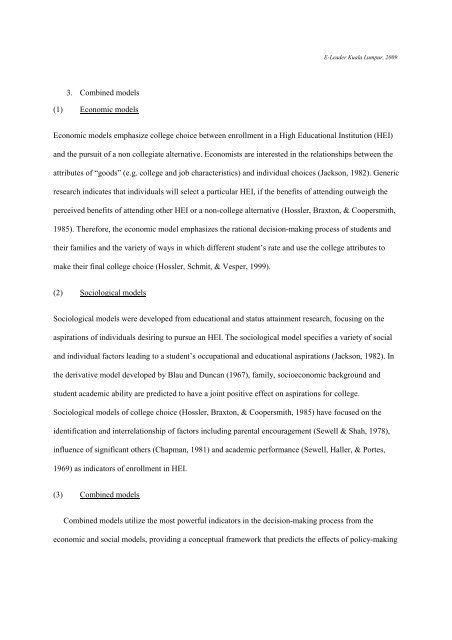
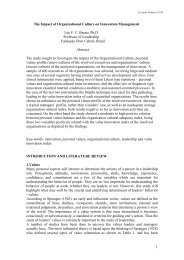
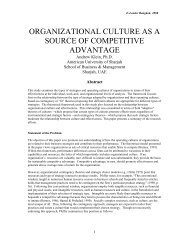
![Oberholzer [Compatibility Mode].pdf - CASA](https://img.yumpu.com/21081507/1/190x135/oberholzer-compatibility-modepdf-casa.jpg?quality=85)



